Through our lightweight gear, carefully planned itineraries and experienced guides, Wilderness Expeditions allows novice walkers to experience Tasmania’s world-renowned walks. However, all of the walks we offer require a basic level of fitness: You must be comfortable walking for hours on end and be able to deal with slippery, steep, awkward and uneven surfaces. Virtually all tracks in Tasmania involve hills. While you aren’t required to break any speed records, you will need to have enough aerobic fitness to manage large climbs at a steady pace. Any training you do will pay enormous dividends in terms of your enjoyment of the walk.
Assigning a particular grade to a walk is a notoriously difficult task, as many different factors contribute to subjective difficulty. These include the distances covered, the condition of the track underfoot, elevation gain, pack weight, steepness, exposure to weather, technical skills required, how sustained the difficulties are, and countless others. The local context is also important. Tasmania is well known for its challenging walking and what is considered an “easy” walk here might feel significantly more difficult than a “hard” walk elsewhere.
Some walks contain days of varying difficulty and have been given multiple ratings to reflect this (eg. easy/moderate).
Ratings are for the main track only. Side trips will often have a harder rating, however they are always optional and a full-pack is generally not required.
Easy
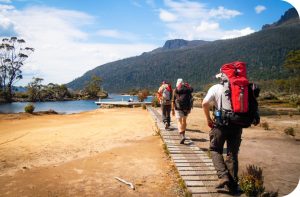
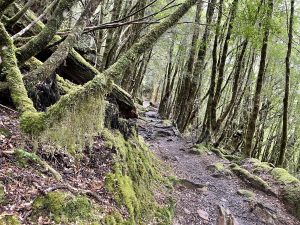
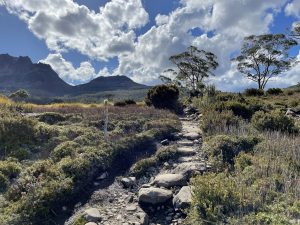
Easy walks are on well formed tracks, with generous time frames and relatively short distances. Elevation gain per day is usually modest (less than 500m) and any steep sections will be short and technically easy. While the tracks covered are not manicured paths (expect lots of awkward and uneven rocky ground) they require no technical skills or prior experience and should be comfortably manageable for first time walkers with a basic level of fitness.
Moderate
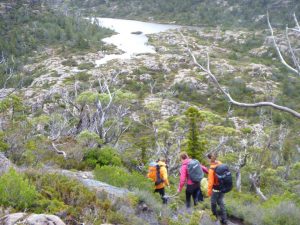
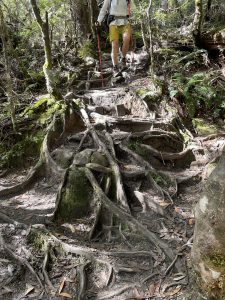
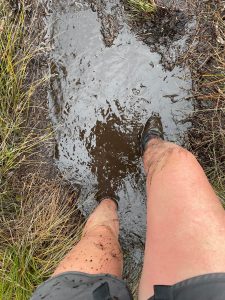
Moderate walks are on tracks that are rougher underfoot and require bigger days. Slippery roots, tricky rocks and mud will be encountered, and walkers will need to move slowly and carefully. There will be more time spent walking each day (6 hours or more) and longer distances may need to be covered (above 15 km). Elevation gain could be greater (500m or more) and there may be sustained, steeper sections where hands are needed for balance. There may be long sections of track without shelter where the full force of bad weather will be felt. These walks are suitable for adventurous first-time walkers with a moderate level of fitness.
Hard
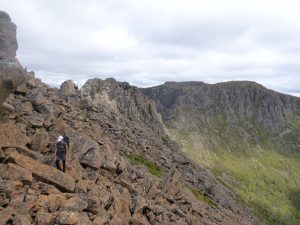
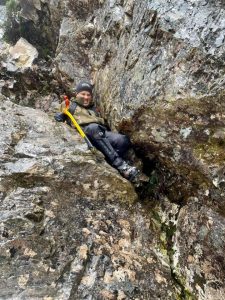
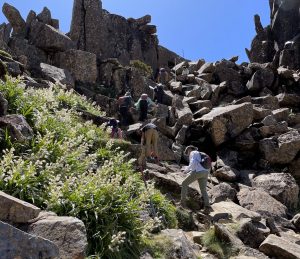
Hard walks are on very rough tracks that involve knee-deep mud, overgrown vegetation and steep, difficult terrain. Longer days (8 hours or more) will be required to cover the minimum distances between campsites and the pace will be a little faster out of necessity. Significant elevation gain (up to 1000m) may be necessary and steep sections can be long and relentless. No climbing experience is required, but walkers must be comfortable scrambling over rough terrain with some exposure. On some walks of this difficulty (eg. the South Coast Track), walkers will be required to carry a small portion of the food, resulting in heavier packs. Hard walks are usually only suitable for those with good fitness and previous bushwalking experience.
Severe
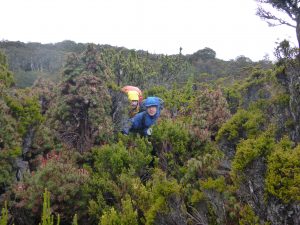
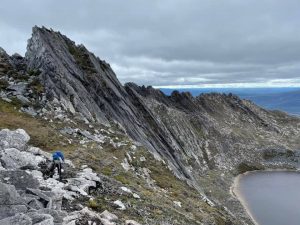
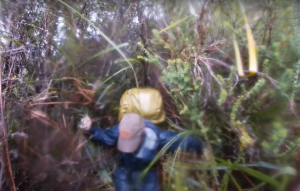
Severe walks are on extremely rugged tracks or routes that traverse untracked areas. Days can be long (10 hours or more) and exhausting even for very fit and experienced individuals. Climbs of more than 1000m with unrelentingly steep gradients are to be expected. The vegetation can range from overgrown branches that have to be manoeuvred around, to fallen trees that must be crawled under, to dense walls of scrub that have to be bashed through. Technical rock climbing abilities are not required, but there are likely to be sections that feel very much like rock climbing. Large, unprotected drops will be unavoidable. There may be multiple days spent on ridgetops exposed to the weather. Walkers will need to carry more gear and a portion of the food. Severe walks should only be considered by those with excellent fitness and extensive bushwalking experience
Fitness and Experience Self Assessment
The following rubric can be used to give yourself a score for fitness and experience.
Fitness:
1: Very little or no regular exercise. Sedentary job. Out of breath climbing one set of stairs.
2: Some regular gentle exercise such (eg. walking, cycling, swimming – less than 1.5 hours per week) and/or a job that involves some physical activity. Could walk 10km on flat ground in 2.5 hours.
3: Regular moderate aerobic exercise (walking, cycling, swimming, team sports – 1.5 to 3 hours per week). Could walk 10km on flat ground in under 2 hours.
4: Regular moderate/intense aerobic exercise (running, bushwalking, cycling, swimming, team sports, aerobic gym workouts – 3+ hours per week). Could run 10km, cycle 60km or bushwalk 30km with a light pack.
5: Daily moderate/intense aerobic exercise (running, bushwalking, cycling, swimming, team sports, aerobic gym workouts – 4+ hours per week). Could run a marathon, cycle 100km, or bushwalk 30km over hills with a heavy pack.
Experience:
1: Never been camping. Very little experience in wilderness areas.
2: Have been car camping and done some day walks.
3: Have done an overnight bushwalk before. Some familiarity with bushwalking gear.
4: Have done multiple overnight bushwalks. Feels confident using bushwalking gear.
5: Regular overnight bushwalks. Very familiar with gear and well-practiced using it.
| Walk Difficulty | Minimum Fitness | Minimum Experience | |
| Walls of Jerusalem | Easy | 2 | 1 |
| Overland Track | Easy/Moderate | 2 | 2 |
| Frenchmans Cap | Moderate/Hard | 3 | 3 (2 if 4+ fitness) |
| South Coast Track | Moderate/Hard | 3 | 4 (3 if 4+ fitness) |
Training and Preparation
Regardless of the grade, any amount of training you do before your walk will pay enormous dividends. Any training program should be started well in advance, as building up your aerobic capacity and walking specific strength takes months rather than weeks. The best way to train for walking, is to walk. If you are new to bushwalking, start small with short walks multiple times a week. While walking on streets and well-made paths will be beneficial, it’s best to find rougher tracks and steep gradients that will better simulate the demands of Tasmanian bushwalking. If that sort of terrain isn’t available to you, repeatedly climbing long sets of stairs can be a reasonable approximation. Getting your body used to carrying a pack is one of the most important aspects of your training. Again, if you are new to bushwalking, start light (4-6 kg) and build up to the pack weight you will be carrying on your trip (10kg +). As a minimum for our walks, you should be comfortable carrying 10kg for up to 5 hours, over distances greater than 12km, on routes that include climbs and uneven terrain.
Other exercises such as weight training, team sports, yoga/pilates, cycling and swimming are great, but only as a compliment to walking.
Rock climbing at an indoor gym is a fun way to improve your balance, strength and coordination. If you are doing a more challenging walk (Hard or Severe) it is also a very useful way to get used to heights and the climbing specific movements you may need on the more rugged sections of track.
Consulting a physiotherapist or similar health professional is highly advisable before starting a training program, especially if you have any back or lower limb issues they may be an issue on your walk.

